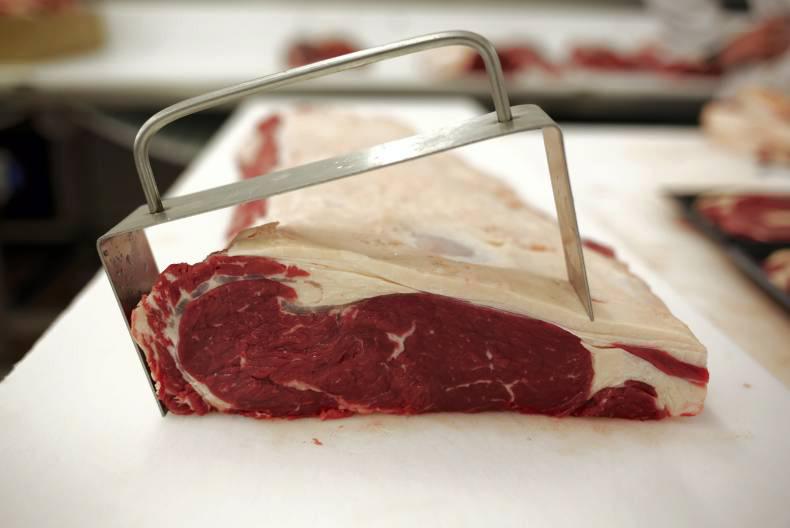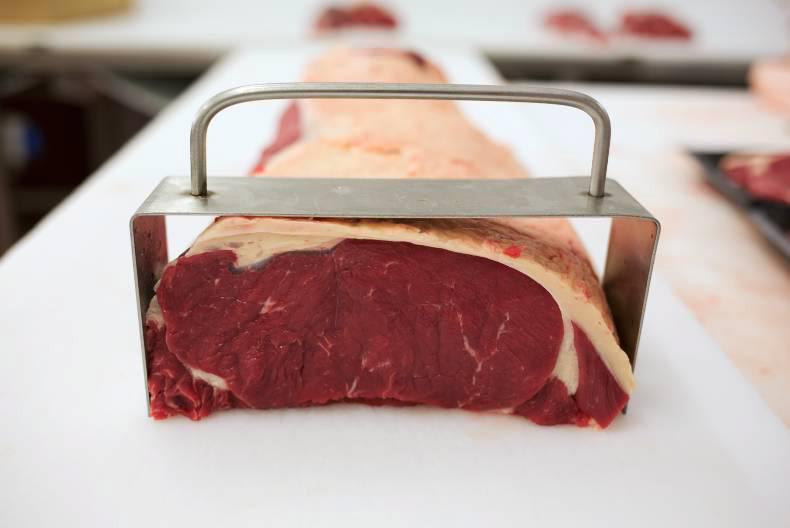Irish cattle prices continue to lumber along, with R3 steers at €3.56/kg for the week ending 19 November, 5% lower than a year ago when the price was €3.80/kg, giving us the worst price of our main trading partners.
With sterling having weakened to below 85p/€1, within the “normal” 75p-85p range, we might have expected to see some of the value from the UK market reflected back in Irish prices. Young bulls are trading at the exact same price as R3 steers, and if we were to compare O3 grades, young bulls are in fact 5c/kg more than the equivalent steer at €3.43/kg, compared with €3.38/kg for O3 steers.
British prices for R3 steers were the equivalent of €4.16/kg when converted to euro, while prices in Northern Ireland were equivalent to €4.04/kg, a noticeable closing of the gap between NI and GB prices, as highlighted in this week’s LMC bulletin.
In sterling, the NI average steer price is £3.51/kg, while the GB steer price is £3.61/kg, in both cases a fraction of a penny higher. The general belief in Britain, and to a lesser extent in the north, is that the trade has peaked, although at the start of this week factories were aggressively chasing cattle in the north.
In mainland Europe, trade in Germany and Italy has surged well ahead of Ireland, and though France may be on par with us for steer prices, they kill predominantly young bulls, which are 6c/kg ahead of our steers.
Sweden, a growing market destination for Irish beef exports, and outside the eurozone, remains strong, with R3 steers there €4.19/kg.
Moving to France, our main export market after the UK, prices were the equivalent of €3.53/kg on steers but €3.62/kg for young bulls, which are more common in France than steers.
Italy reported €3.86/kg on R3 young bulls last week, while Germany was on €3.80/kg for R3 young bulls. The Netherlands continues weak on €3.14/kg, while Spain is on €3.70/kg, 14c/kg ahead of Ireland. This compares with being 36c/kg behind Ireland back in June.
Among the top three exporters in the world, Australia, driven by scarcity of supply, continues to set the pace at €3.74/kg, equivalent to the EU R3 grade, 18c/kg ahead of Ireland.
The US is reporting the equivalent of €3.55/kg, the improvement of recent weeks reflecting the weakening of the dollar against the euro as much as the market. Brazil is trading at the equivalent of €2.55/kg.
Once again this autumn, Irish factories have demonstrated a serious inability to handle a modest increase in cattle supply without collapsing the price in a way which hasn’t happened in our main trading partners for beef.
They published ambitious development plans for each of the sectors this year to deliver Food Wise 2025 which were excellent insofar as they went, but failed to mention how they would deliver a sustainable price to farmers.
Retail prices in British supermarkets fell in the second half of the year, even though farmgate prices increased and several were on volume-driven promotions. Comparing the amount of UK-origin beef sold in August versus June, the big two users of non-UK beef (ASDA and Tesco) increased their non-UK share, according to AHDB’s country-of-origin survey. Clearly there were substantial volumes of Irish beef in these price-driven promotions which didn’t return extra value to Irish farmer suppliers.
Factories bemoan the coverage the tiny live export industry from Ireland attracts. Yet the price collapse in the second half of this year, unique to Ireland among our beef trading partners, suggests we don’t have any other way of handling the extra numbers coming into the market this year and forecast for next year as well.






 This is a subscriber-only article
This is a subscriber-only article











SHARING OPTIONS: